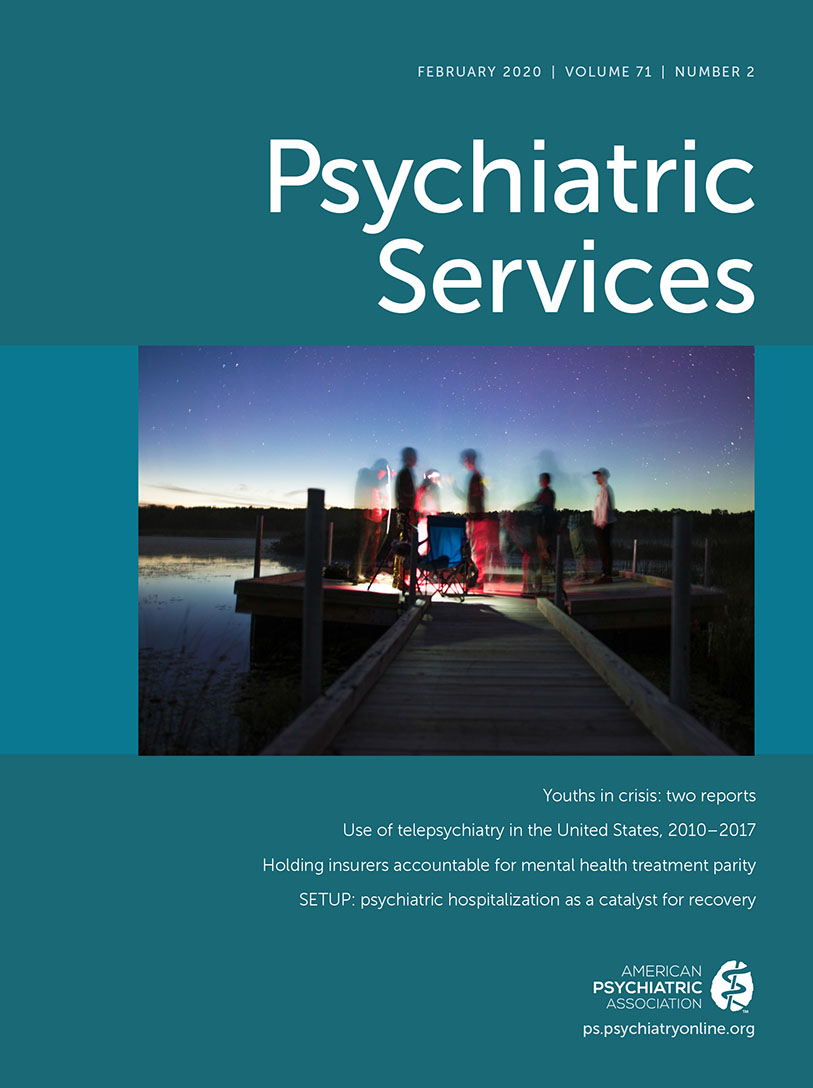Value in health care is defined as the relationship between quality of care (ideally defined in terms of health outcomes) and the dollar cost of providing it (
1). As health care providers, we often read that the basis of reimbursement in health care is now moving from “volume to value” (
2). In principle this sounds reasonable and even laudable. Few would argue against improving quality and controlling costs—as long as cost control is attained by the elimination of waste. Yet implementing that goal is tricky, particularly in mental health care.
First, how does one define and measure quality? This question is under debate everywhere in medicine, but nowhere is the debate more complex than in mental health care. As an overarching principle, it might be said that high-quality care is care that achieves the goals of treatment. This presumes that as health care providers, we are good at articulating the goals of treatment and measuring whether they are being achieved (we are not). In fact, there are a limited number of quality measures to work with, and for the most part, they are process measures with plausible—but not proven—links to outcomes. Few outcome measures are endorsed by the National Quality Forum, and even those are difficult to interpret without appropriate risk adjustment; for example, depression remission can be measured by the Patient Health Questionnaire–9, but that is likely to disadvantage practices that specialize in treatment-resistant depression.
Furthermore, what is waste? Waste might be defined as diagnostic or therapeutic activity that does not contribute to achieving the goals of care. But do we know what contributes to achieving the goals of care (assuming we have identified them clearly) in the real world of day-to-day practice? Treatment often consists of a mélange of interventions—involving biological, psychological, and social approaches—and it is difficult to parse how each intervention contributes to a patient’s improvement. When a suicidal patient improves after 3 days in the hospital, can we discern what made the difference? Was the active agent an anxiety-reducing medication, supportive interactions with staff or even other patients, asylum from stressful circumstances at home? All three? Something else? Would we get the same results, say, by providing respite from stressful circumstances or immersive outpatient psychotherapy—or simply by providing medications? Do we know? Which of these interventions is waste? What would we eliminate? Even if we knew the answers, it is likely that they would be different for different patients.
This last question brings us to the most fundamental issue. Patients—even those with the same diagnosis—are not all the same. We know that. Their goals are not identical. Their preferences regarding treatment options are not identical. So it is unlikely that a single definition of quality—or a standardized, one-size-fits-all measure of the quality of care—would be appropriate. This is vital to understand because quality of care is the numerator of the value equation. If our definition of quality does not recognize individual differences in treatment goals and preferences, we might be measuring quality of care for a population of patients, but we are not measuring the quality of care as perceived by the individuals seeking care.
Likewise, if the definition of waste does not take into account that different patients might benefit from different interventions (i.e., the same intervention may be valuable for one patient but wasteful for another), we might seek to reduce cost by eliminating an intervention that is unhelpful for many patients but essential for others. After all, patients and their therapists sometimes have very different perceptions about what works in treatment (
3).
The fact is that judging value at the level of populations is not quite the same thing as judging value at the level of individual patients. Simply put, high-value care for a population is not necessarily the same as the care I hope to receive at my next doctor visit. Maybe it can never be. But wouldn’t it be worthwhile to try to reconcile these perspectives? It might be argued that patient-centered care is all about reconciling these perspectives. But the “patient” in patient-centered care is an abstraction, not an individual person. And care can be centered on the patient—as nearly all agree it should be–without considering what is unique about the particular person sitting in the room with the doctor today. Truly reconciling these perspectives would require “person-centered” care. In some ways, this is a very old-fashioned idea. It is how we aspire to think as clinicians when working with individual patients. And it represents the type of care we hope to receive when we ourselves are patients. The challenge is to figure out how to create a value paradigm that measures value at the “person” level and rolls data up into an aggregate score that satisfies the needs of all stakeholders.
Something similar has been proposed (
4). In this model, the unit of measurement is the clinical exchange between a particular clinician and a particular patient. The clinician conducts a thorough evaluation and develops a clinical formulation and diagnosis (e.g., major depression in the setting of recent job loss). The clinician shares this with the patient, and together they arrive at an agreement regarding the goals of treatment (e.g., resolution of depressive symptoms and recovery of function sufficient to support searching for a new job). They then review the treatment options that are available and consistent with the evidence or standard of care (e.g., medication alone, psychotherapy alone, or both medication and psychotherapy) and together arrive at a plan of care. As treatment proceeds, the quality of care is measured in terms of the achievement of the agreed-upon goals of treatment. The highest quality outcome is one in which all the goals of treatment are realized. How does one use this approach to evaluate the overall quality of care provided by an individual or a system of care? The answer is by aggregating the goal achievement statistics across patients and across clinicians. The higher the rate of goal achievement, the higher the quality.
It sounds operationally complex, and it may be, but so are the existing and emerging quality measurement schemes. Naturally, it can be gamed, but so can every other measurement scheme. But isn’t it worth a try? It is exciting that there is a growing mental health literature on implementing measurement-based care, including approaches using idiographic (e.g., patient goal setting and tracking) measures (
5), and on techniques to enhance patients’ communication of their treatment goals (
6). In addition, fledgling efforts are underway to develop methods for measuring and incentivizing person-centered care and assessing how it’s working at achieving the person-specific goals of care (
7). Prominent voices are prodding us to do something like this (
8). Shouldn’t it be our goal to strive for a system that reconciles the interests of third parties in high-value care with the desire of patients for care they value highly? And shouldn’t psychiatry be in the vanguard of efforts to create such a system?

